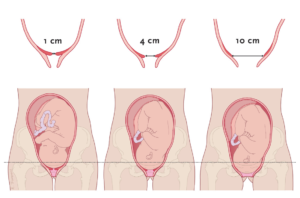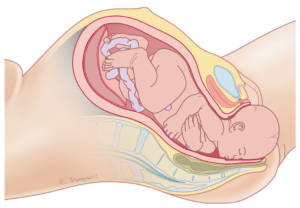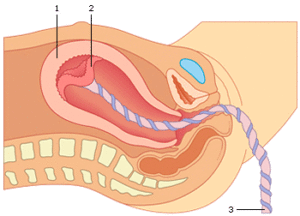Phases of labor
Types of contractions
When we speak of contractions, in obstetrics, we mean the (painful) contracting of the uterine muscles. The abdomen feels hard, with a possible pain in the lower abdomen. There are several types of contractions, not all as painful:
Practice contractions / hard bellies
Early contractions can be felt from the 3rd month. The cause is the growth of the uterus, and sometimes fatigue or stress. Usually, these contractions do not hurt, but they can feel similar to menstrual pain and / or intestinal cramps. These hard bellies are irregular and go away automatically. Heat and rest can help.
Preterm contractions (Braxton-Hicks)
Preterm contractions can start to occur at 6 months. They can be caused by
- Movements of the baby;
- Making love;
- fatigue;
- stress;
- a full bladder;
- a uterine tract infection (always have it treated by a GP).
Preterm contractions can differ in frequency and strength; fast-paced, short-lived and non-painful contractions, or contractions that just pop up once or twice an hour, last a few minutes but are painful. Both are normal. A warm bath or hot shower is relaxing and helps stop the contractions.
Lightening contractions
The lightening of the baby can also cause contractions. They can last for several hours.
Labor contractions
Actual labor contractions are much more painful than the other types of contractions. These contractions will lead to wider dilation of the cervix. They will become more frequent, up to once every three to five minutes and last for about a minute.

Dilation phase
This is the phase during which the cervix dilates, by means of contractions. They are painful contractions of the uterine muscle. Characteristic of good labor contractions is that they are frequent, increasingly painful and last longer.

Pushing phase
The pushing phase starts when there is full dilation. You will feel pressure in the belly. Once the obstetrician has confirmed the complete dilation, you will start pushing. With your firstborn, it will take 1 hour on average. For each subsequent child, probably shorter.

| Within one hour of the birth of the baby, the placenta will need to be delivered. Only after this, the birth is complete, and only after this, wounds will be sutured if necessary. |
© KNOV & Gezondheidsplein


